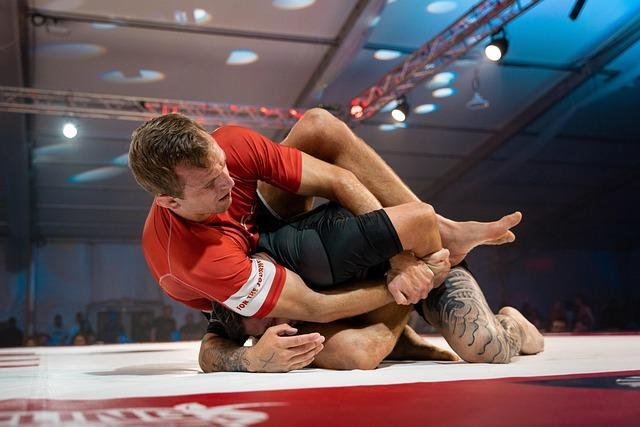In the dynamic world of martial arts, Brazilian Jiu-Jitsu (BJJ) is undergoing a transformative shift powered by cutting-edge technology. Athletes and coaches are increasingly embracing innovative tech tools—ranging from advanced motion sensors to AI-driven training platforms—that are redefining how skills are honed and performance is measured. This fusion of tradition and technology is not only enhancing training efficiency but also opening new avenues for injury prevention and competitive advantage, signaling a revolution in the way Jiu-Jitsu practitioners prepare for the mat.
Table of Contents:
- Emerging Technologies transforming Jiu-Jitsu Training Regimens
- data-Driven Insights Enhance Technique and Performance
- Wearable Devices Offer Real-Time Feedback for Athletes
- integrating Virtual Reality to Simulate Live Sparring Scenarios
- Final Thoughts
Emerging Technologies transforming Jiu-Jitsu Training Regimens
In recent years, the fusion of advanced technology with traditional martial arts has sparked a transformation in how athletes prepare and perfect their craft. Cutting-edge wearable devices equipped with biometric sensors now offer real-time feedback on heart rate, muscle fatigue, and motion efficiency, enabling practitioners to optimize each training session with pinpoint precision. Additionally, artificial intelligence-driven analysis platforms break down movement patterns, helping coaches develop personalized drills that target an athlete’s weaknesses and accelerate skill acquisition.
Virtual reality (VR) and augmented reality (AR) have also carved out a notable space in dojo innovation. These immersive tools provide simulated sparring experiences that replicate high-pressure competition scenarios without physical wear and tear. Key technologies reshaping training approaches include:
- 3D motion capture systems for technique refinement
- AI-powered match analysis software revealing strategic insights
- Smart mats that track positional data and impact forces
- Wearable neuromuscular stimulators accelerating recovery
As these advancements permeate, Jiu-Jitsu athletes are gaining unparalleled tools to elevate their performance in and out of the gym.
Data-Driven Insights Enhance Technique and Performance
Cutting-edge analytics platforms are transforming how Jiu-Jitsu athletes measure and refine their craft. By capturing real-time data during training sessions, practitioners gain invaluable insights into their movements, endurance, and tactical decisions. Coaches leverage this details to tailor drills that address individual weaknesses, ensuring every practice is rooted in measurable progress. The integration of video analytics, force sensors, and biometric feedback provides a granular view of technique execution, enabling pinpoint adjustments that elevate overall performance.
Key benefits driving this revolution include:
- Enhanced identification of inefficient movements and habits
- Objective tracking of strength and stamina improvements over time
- Data-supported strategies for in-match adaptability and counterattacks
- Personalized training regimens aligned with competitive goals
These data-driven approaches empower athletes to transcend traditional trial-and-error methods.As metrics illuminate paths to optimization, the sport is witnessing a paradigm shift—where science and skill converge to produce sharper, faster, and more resilient fighters.
Wearable Devices Offer Real-Time Feedback for Athletes
Modern wearable devices have transformed the landscape for Jiu-Jitsu athletes by delivering instantaneous biometric data directly to their wrists or smartphones. Sensors embedded in smartwatches and fitness bands monitor critical metrics such as heart rate variability, muscle fatigue, and movement patterns during live training sessions. This real-time feedback empowers practitioners to make immediate adjustments, optimizing performance while minimizing the risk of injury.Coaches now rely on detailed analytics to tailor workout intensity, ensuring every drill and sparring session targets specific physiological responses.
The technology goes beyond mere data collection by integrating AI-driven insights that detect subtle shifts in technique and endurance. Key advantages include:
- Enhanced situational awareness: Athletes gain a clear picture of their physical limits and recovery needs.
- Precise technique refinement: Motion sensors identify inconsistencies in grips and transitions.
- Customized training plans: Data trends inform personalized regimens for maximum improvement.
Integrating virtual Reality to Simulate Live Sparring Scenarios
Virtual Reality (VR) technology is transforming the traditional confines of Jiu-Jitsu training by offering athletes an immersive experience that closely mimics real-life sparring. Using VR headsets and motion-tracking sensors, practitioners can engage with virtual opponents who react dynamically to their moves, allowing for a realistic training surroundings without the risk of injury. This digital simulation not only sharpens reflexes and technique but also enables detailed performance analysis through real-time data metrics, aiding coaches in fine-tuning their athletes’ strategies.
Key benefits of VR integration include:
- Safe and Controlled Environment: Enables repeated scenario practice without physical exhaustion or injury concerns.
- Customized Training Modules: Allows for tailored sparring scenarios focusing on specific techniques or opponent styles.
- Instant Feedback: tracks movement precision and timing, providing actionable insights right after each session.
final Thoughts
As technology continues to advance, its integration into Jiu-Jitsu training marks a pivotal shift in how athletes prepare and perform. From data-driven analytics to immersive virtual coaching,these innovative tools are not only enhancing skill progress but also redefining the future of the sport. as competitors and coaches embrace this digital transformation, the landscape of Jiu-jitsu promises to become more precise, efficient, and accessible—heralding a new era for athletes at all levels.

